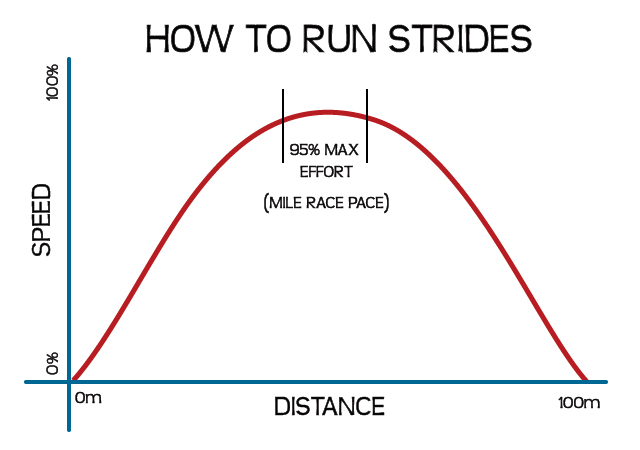I love actionable advice – especially when it’s in bite-sized pieces that can be read quickly and (more importantly) implemented immediately.

Often I’m asked the same question over and over again. Like:
- What are the best strength exercises for runners? (answer here)
- I can’t shake this IT Band Syndrome… heeeellp!! (answer here)
- How do I finish strong in my next marathon? (answer here)
Many of these questions are complex – and the answers are, too. There’s a lot to cover so the articles, videos, and other resources you find on SR are detailed and cover every possible situation.
I’d much rather create massively detailed and more helpful coaching material for you than short posts that just scratch the surface of what you need to know.
But sometimes, questions aren’t that complex. They’re simple!
And that’s what we’re covering in this piece: questions that get asked all the time via email and Twitter (follow me here and I can usually offer quick responses for quick questions!).
They’re short, simple, and don’t require their own article or video. Ready? Let’s dive in.
How do I run strides on a treadmill?
It’s true: you can’t run strides on a treadmill the same way that you’d run them outside.
Outside, you take about a minute of walking or standing as recovery after each stride. They’re essentially accelerations that are run by feel to about 95% of maximum speed (a “controlled sprint”).
If the effort was a graph, they’d look like this:

But on a treadmill, you have to adjust how you run strides. There are two options:
Option #1: Run surges. During the last mile of your run, increase the pace to a “very hard” effort for about 20 seconds. Run 1-2 minutes very easy in between each 20-second repetition.
Option #1: Run modified strides. After you finish your run, run strides just like you would outside (except now on a TM) with a minute of walking in between each stride.
Increase the pace for about 10 seconds to roughly 95% of max speed, hold for 2-3 seconds, and then decrease the pace until you’re walking.
Neither option is perfect but they both mimic strides so closely that they’re virtually indistinguishable.
If you run them outside, here’s a video demonstration:
Just remember to run your pace, not mine. 95% of max effort is relative to your ability!
How do I read a workout description?
In college, our workouts were posted outside our coach’s office. We’d read things like this:
Drills + 15′ w/u + 6 strides + 5xmile @ 5k Pace w/ 2′ rest. 15-20′ w/d
What in the world does that even mean?!
First, the notations: the ‘ symbol stands for minutes. If you see a double quotation mark like ” then that means seconds.
And w/u is shorthand for warm-up. You guessed correctly if you thought w/d stands for warm-down.
So if you read it out loud, you would say:
First, do running drills and then run a 15-minute warm-up. After running 6 strides, the workout is five repetitions of 1-mile at 5k pace with 2 minutes of jogging recovery. End the session with 15-20 minutes of easy running to warm down.
Once you’ve read a few workouts like this, you’ll easily get the hang of it.
If you’ve gotten a personalized program from me, you’ll see that I use similar shorthand in my plans as well.
What is a fartlek workout?
Fartlek is Swedish for “speed play.” The beauty of fartleks is that they’re incredibly versatile:
- They can be run during the base, competition, or taper periods of training
- They can be based on time (“5 x 1min”) or distance (” 5 x 1-block” or “5 x this random hill”)
- They can be run at any speed or on any terrain
- The recovery can be short or long (or medium length!)
Brad Hudson perfectly describes the essence of fartleks in his Little Black Book:
A fartlek can be used to accomplish just about anything that you would want to get done on the track. There are times early in a training phase when an athlete may be physically prepared for a hard workout, but may not be mentally ready…
Many times a fartlek can be used as a general workout, a light workout, or a “do-as-you-feel” workout. You can also turn it into a harder, more specific workout to be used at any point in training.
I couldn’t agree more. They’re versatile, can be run anywhere, and are appropriate for beginner runners or elite athletes.
Since a fartlek can be nearly anything, here are some examples:
- 8 x 1min @ hard effort, 2min easy effort recovery
- 5 x 3min @ medium-hard effort, 1min moderate recovery
- 10 x 30sec @ hard effort, 2min moderate recovery
The sky’s the limit with fartleks, so get creative at manipulating the repetition intensity/duration and the recovery intensity/duration.
If you enjoyed this type of post, check out my book 101 Simple Ways to be a Better Runner (also available as an instant download if you don’t have a Kindle reader!).
You’ll learn easy-to-implement strategies to boost your speed, recover faster, and increase endurance so you can become a more powerful athlete.